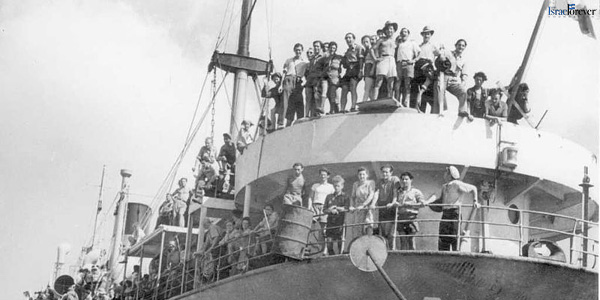
Word of the Day: Wyvern
Today’s word of the day, from Dictionary.com, is wyvern, which can also be spelled wivern. It is pronounced with a “long I,” /ˈwaɪ vərn/. It is a noun which refers to a mythical creature that is a cross between a dragon, an eagle, and a snake. It entered the language about “1600, formed (with unetymological –n) from Middle English wyver (c. 1300), from Anglo-French wivre, from Old North French form of Old French guivre ‘snake,’ from Latin vipera ‘viper’ (see viper). In heraldry, a winged dragon with eagle’s feet and a serpent’s barbed tail” (https://www.etymonline.com/word/wyvern#etymonline_v_10894).
Unetymological means that whatever it is is not in accordance with the etymology or history of the word. In this case, the n just shows up at some point, though there must be a reason for. Unfortunately, some things in history are never to be discovered, until someone invents a time machine. The w is a different issue. In Latin (and in some other PIE languages) the letter v is pronounced the way we pronounce the letter w. Growing up, I learned that Julius Caesar famously said, after taking over Gaul, “I came, I saw, I conquered.” Said in Church Latin, it was said, “Veni, vidi, vici,” pronounced like /’ve nee, ‘vee dee, ‘vee chee/. But what Caesar actually said was probably /’wā nee, ‘wee dee, ‘wee kee/, which does not sound nearly as macho, especially if you say it fast.
On this date in 1934, according to the On This Day website, the first Jewish transport ship broke through the British blockade of Palestine. I believe that ship was called the Vallos, and it took 350 illegal Jewish immigrants to Palestine, where they were eventually given permission to disembark. Illegal immigrants?
After World War I, the Allies broke up the Ottoman Empire. Although they had promised the Arabs living in the Middle East that they would have their independence, the British and French ended up splitting part of the empire between them, with the French getting Syria and Lebanon, more or less, and Britain getting Iraq and Palestine, which included modern-day Jordan. This was done under the auspices of the League of Nations, and the idea was that the European countries would act as guardians while these territories worked toward nationhood. At the same time, the British, in what is called the Balfour Declaration, basically promised the Jews a national homeland.
European Jews began to migrate to Palestine, especially in the 1930s to escape the threat of the Nazis, although anti-Jewish laws were passed in Poland. But the British found themselves in a difficult position because the Arabs living in Palestine objected to the migration. So they began to try to limit Jewish immigration. The excuse they gave for limiting immigration was that the land couldn’t support that many people though the population was about 1 million and today it is closer to 6 million.
The Vallos was not the only ship to make it through to Palestine. The most famous ship to make the journey from Europe was the Exodus 1947. It left France for Palestine carrying 4500 passengers, but it was surrounded by British naval ships and towed to Haifa, where the passengers for forced aboard British ships and returned to Europe. At a French port, the passengers refused to disembark, and the French authorities refused to drag them off. So the Brits took them to a port in the British controlled part of Germany, where they were interned in a camp. Many of these passengers had survived the Holocaust. Many were orphans. At the French port, the passengers engaged in a 24-day hunger strike. But the British did not relent.
But Palestine was not the only destination for Jews who wanted to leave Europe before and after World War II. The St. Louis carried 937 Jews from Germany for Cuba, leaving in May of 1939. What the passengers did not know was that, because of rising unemployment in Cuba, the president of that country had revoked their visas. Only a handful of passengers were allowed to disembark. The captain of the ship, who was determined that the Jews not be returned to Germany, sailed to nearby Florida where he pleaded with the authorities to let the Jews in. The White House refused. The Canadian government also refused. The ship eventually returned to Europe where the passengers were given refuge in several European countries. But nearly a third of them died before the war was over.
There are other horror stories about ships trying to get Jews from Europe to Palestine. Many of them died, either because of accidents at sea or because they were returned to Europe.
There is a kind of myth that the Nazis were an aberration in Europe with their hatred of the Jews. But the reality is that anti-Semitism existed in Europe for centuries before the Nazis took over Germany, and that anti-Semitism existed in many European countries in the 20th century. Even a liberal democracy like Great Britain exhibited anti-Semitism.
Some myths, like the existence of dragon-like creatures that are part eagle and part serpent, are harmless. Other myths, like that only fascists are anti-Semitic, are not.
If you’re interested in reading more, here are some links: https://israelforever.org/history/aliyah_bet/timeline/, https://www.theshipyardblog.com/exodus-by-sea-ships-that-saved-jewish-refugees-from-the-holocaust-and-some-that-couldnt/, https://www.jewishgen.org/yizkor/Bessarabia01/bes287.html, https://www.jstor.org/stable/4283956.
The image today, from the first linked website, is of the Vallos with its Jewish refugees in 1934.